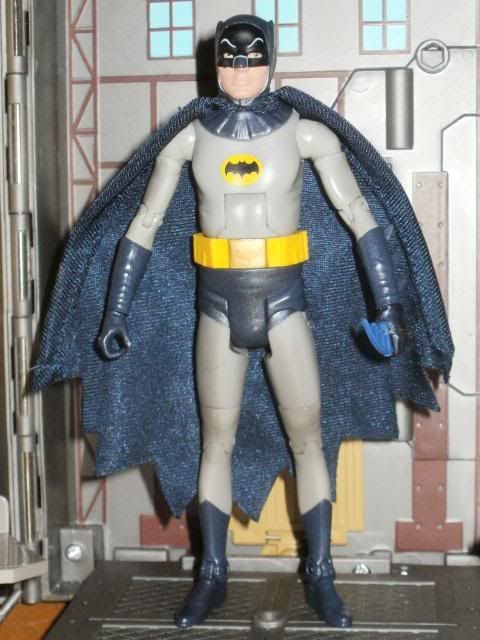Potentially, Minnesota is looking at having four draft picks in the first round and, besides their own, two second round picks from Miami. Okay, on the surface, I can't imagine Minnesota selecting a player for every single one of these selections. Would they...? I mean if you throw enough bleep against the wall, something will stick. But, when you stockpile the number of draft picks that Minnesota has in this draft alone. You've "bigger" plans.
Is Al Jefferson truly this franchise's centerpiece to build around toward being a perennially playoff team and more. In other words, Jefferson's either Roy or Aldridge. If not Roy, the real face of the franchise might lie in this draft among one of these first round picks. And are Love, Foye and Brewer mainstays?
Answering these questions can become the difference between Minnesota drafting players that make up the foundation of a solid bench or it'll produce a Batman to Jefferson's Robin if Jefferson isn't Batman. Pierce was Batman to Antoine Walker's Robin. However, this dynamic duo prove not enough to reach a NBA Finals. Some years later, Ainge completed two separate trades to acquire two All-Star players. Two players that helped Pierce and company reach the NBA Finals. Let's say Jefferson's Roy, "The Man." Minnesota will need to identify the next proper step to take toward winning a championship now that you've your perceived franchise player in place. So, I ask this question: Are they a team in a position similar to Boston in having young trading chips (players and multiple draft picks) to do as Ainge did prior to last season? Well, assuming that Minnesota isn't content with simply becoming a playoff team in the foreseeable future. Looking at this closely, changing your roster as Ainge did is tough. Even what Dumars was able to pull off was remarkable. It's all about timing and what have you. But, Minnesota has to understand that the way to the fast track of success will be a longer one (a process) if they're like Portland and have young players that are their star and best players. Remember you need veterans. For Portland, those veterans that can make a difference don't have to be an All-Star necessarily. Still, it doesn't hurt... Pierce being a perennial All-Star didn't affect Ainge's decision to acquire at least another All-Star player. I think Portland would agree in taking the same approach as Roy likewise is already an All-Star. Conversely, Minnesota has Jefferson who may or may not ever be an All-Star. There's a difference between having a player on the cusp and one who's a perennial All-Star. For now, we'll classify Jefferson as an All-Star caliber player.
Is this off season the right time for Minnesota? Hence, why it's tough. How do you know when you've reached that point in the process when you determine that now is the right time to make your move to make that jump. Both Ainge and Dumars were able to gauge their situations correctly and the payoff for each proves knowing when to move is essential. I feel that the general manager of Minnesota needs to mull over the first round worthy draft prospects, trade scenarios and the overall plans for this off season and trust himself. This could be it. That opening... Will you jump?
There actually is a team in the Northwest Division rooting for Utah's renaissance to continue.
Minnesota, namely.
The reason?
The Wolves would have four first-round picks in the June draft -- giving them an extra trade asset or two, if nothing else, in a draft no one is calling deep -- should Utah's late-season push result in a draft pick that winds up at No. 23 or lower. The Jazz retain the pick for this draft if it falls between No. 1 and No. 22. If it doesn't, Minnesota adds it to its own lottery pick and first-rounders previously acquired from Miami and Boston.
http://sports.espn.go.com/nba/dailydime ... -090321-22
Perhaps, this relates to this topic.
Falk is not the only prominent figure to suggest that the NBA's salary-cap system needs an overhaul. Before the league recently issued a memo forbidding team representatives from "making any unauthorized public comments about collective bargaining," Memphis Grizzlies owner Michael Heisley and Minnesota Timberwolves owner Glen Taylor voiced concerns, respectively, about the growing divide between big-market and small-market teams in a weak economy and the league's average salary of nearly $5.5 million.
The landscape has certainly changed since the NBA was the first major league to implement a salary cap starting with the 1984-85 season. Franchise values are obviously no longer skyrocketing -- especially since there aren't many folks looking to buy franchises at the minute -- and the various revenue streams (such as season-ticket renewals, corporate sponsorships and luxury-suite sales) are virtually certain for an unprecedented decline starting next season because businesses everywhere are struggling.
That's why, in recent weeks, you've heard more and more about teams' quietly lobbying for a major reduction in contract lengths, lower maximum and minimum salaries, reductions in annual raises and the elimination of the annual midlevel cap exception that enables role players to receive five-year contracts in excess of $30 million … while also giving big-market teams that are willing to pay luxury-tax penalties yet another spending outlet that small-market teams say they can't afford.










